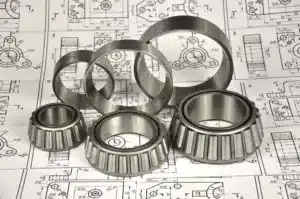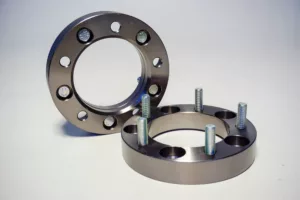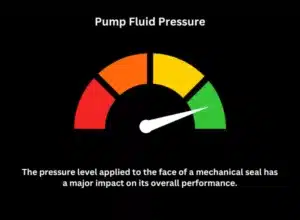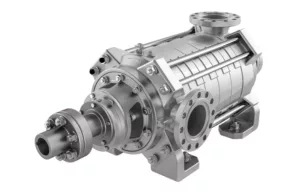
Centrifugal Pump Seals: Types and Installation Tips
When it comes to centrifugal pump systems, mechanical seals are essential. By stopping fluid leaks and keeping impurities out, these devices help to maintain the dependability of pump systems. Different designs of mechanical seal systems are available to control the seal environment, keep an eye out for leaks, and make sure the secondary seals are properly lubricated.
The type of pump and particular process requirements determine which centrifugal pump seals are best. Every seal variant has unique features and designs that make it the ideal option for a given use case. MES positions itself as an authority in the sector by bringing a wealth of knowledge about industrial mechanical seals and the systems that support them.
The advantages and disadvantages of the various kinds of mechanical seals used in centrifugal pumps are discussed in this article.
Different Types of Centrifugal Pump Mechanical Seals
 Mechanical seals come in various designs, configurations, and techniques to manage hydraulic stresses on their surfaces. The following are a few of the most widely used seal types:
Mechanical seals come in various designs, configurations, and techniques to manage hydraulic stresses on their surfaces. The following are a few of the most widely used seal types:
- Balanced seals
- Unbalanced seals
- Pusher seals
- Non-pusher seals
- Conventional seals
- Cartridge seals
Balanced Seals and Unbalanced Seals
Balanced mechanical seal arrangements are designed to counteract the forces on the seal faces. This balance reduces pressure on the faces, leading to better lubrication and extended seal durability. Please find out more about our mechanical seal lubrication systems now.
Balanced mechanical seals are perfect for operating at higher pressures, typically above 200 PSIG. They also perform well when working with liquids with low lubricating properties or higher volatility.
Unbalanced mechanical seals are typically a more cost-effective alternative to the more intricate balanced seal. Because of better control of the face film, unbalanced seals might show less product leakage, which can result in a much shorter mean time before failure. These unbalanced seals are not suitable for high-pressure situations or most hydrocarbon-based applications.
Pusher and Non-Pusher Seals
Pusher seals make use of one or more springs to keep the closing forces intact. These springs can be in the rotating or stationary parts of the mechanical seal. Pusher seals can provide sealing at very high pressures but have a disadvantage because the elastomer located under the primary seal face can wear down as the face moves along the shaft or sleeve during operation.
Non-pusher seals use metal or elastomeric bellows to keep the closing forces of the seal intact. These seals are best suited for dirty or high-temperature environments. Bellow seals are restricted to applications with medium or lower pressures.
Both pusher and non-pusher designs are available in both balanced and unbalanced configurations.
Conventional Mechanical Seals
 Conventional seals typically cost less and are often installed on general service equipment. However, because they are installed as individual components, they require higher operator skills.
Conventional seals typically cost less and are often installed on general service equipment. However, because they are installed as individual components, they require higher operator skills.
Cartridge Type Seals
Cartridge-style mechanical seals combine all the necessary sealing components into one unit. This greatly lowers the risk of mistakes during assembly and shortens the time needed to replace the seals.
Important Factors to Consider When Choosing Mechanical Seals for Pumps
When choosing a sealing system for a centrifugal pump, operators need to consider their specific application. Picking the right seal type helps avoid issues with pump performance, failures, and expensive repairs. Operators should evaluate the following factors to prevent these unwanted outcomes before choosing.
Type of Fluid to Be Pumped
The fluid you’re pumping is the most important factor when deciding on a seal type.
Factors like cleanliness, smoothness, and evaporation rate will greatly influence the design of the mechanical seal and its support system.
Pump Fluid Pressure
 The pressure level applied to the face of a mechanical seal has a major impact on its overall performance. An unbalanced mechanical seal will work well if the pump operates at lower pressures. On the other hand, balanced seals will provide a more dependable solution when higher pressures are expected.
The pressure level applied to the face of a mechanical seal has a major impact on its overall performance. An unbalanced mechanical seal will work well if the pump operates at lower pressures. On the other hand, balanced seals will provide a more dependable solution when higher pressures are expected.
Temperature Considerations
In higher-than-normal operating temperatures, balanced mechanical seals outperform unbalanced seals. Compared to other types of seals, balanced mechanical seals are better at preserving components that are sensitive to heat.
Operator Safety Concerns
Operator safety is the top priority for all types of machinery. Double mechanical seals in centrifugal pumps provide additional protection, as they have increased sealing capacity and are generally more reliable.
Benefits Of Mechanical Seals For Your Pumps
Mechanical seals are the preferred sealing method for most pump makers because they suit a variety of applications and offer five key benefits over conventional packed stuffing boxes.
Reduced Friction And Loss Of Power
A film of fluid lubricates the faces of mechanical seals. This, along with the perfect spacing between the faces, reduces friction, which means less power is lost.
Zero Product Leakage
 The main purpose of mechanical seals is to prevent pumped fluid from leaking. While there is room for error sometimes, proper installation and venting can prevent this.
The main purpose of mechanical seals is to prevent pumped fluid from leaking. While there is room for error sometimes, proper installation and venting can prevent this.
Elimination Of Excessive Wear
A properly installed mechanical seal can effectively safeguard your equipment. Specific guidelines help with alignment, impeller placement, and similar factors, which add stability and extend your equipment’s lifespan.
Maintenance Reduced
When a mechanical seal is well-aligned, free of vibrations, and kept at an ideal temperature, it lasts long and can be easily fixed if problems arise. Repairing a mechanical seal is also quite affordable.
Long-Term Cost Effectiveness
Minimizing fluid leaks leads to substantial savings by reducing waste, pump failures, and maintenance efforts. These seals also enhance operator safety and bring health, safety, and environmental benefits.
